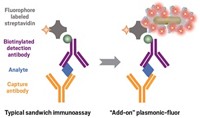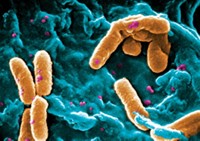Advertisement
Grab your lab coat. Let's get started
Welcome!
Welcome!
Create an account below to get 6 C&EN articles per month, receive newsletters and more - all free.
It seems this is your first time logging in online. Please enter the following information to continue.
As an ACS member you automatically get access to this site. All we need is few more details to create your reading experience.
Not you? Sign in with a different account.
Not you? Sign in with a different account.
ERROR 1
ERROR 1
ERROR 2
ERROR 2
ERROR 2
ERROR 2
ERROR 2
Password and Confirm password must match.
If you have an ACS member number, please enter it here so we can link this account to your membership. (optional)
ERROR 2
ACS values your privacy. By submitting your information, you are gaining access to C&EN and subscribing to our weekly newsletter. We use the information you provide to make your reading experience better, and we will never sell your data to third party members.
Environment
Method Could Resolve Nanosilver’s Cloudy Toxicity Picture
Nanomaterials: Cloud point extraction could help distinguish between silver nanoparticles and silver ions
by Naomi Lubick
August 16, 2011

For toxicologists, silver nanoparticles present a conundrum: Does their toxicity in the environment stem from the nanoparticles themselves or from the silver ions that slough off the particles? Measuring these different forms of silver can be difficult. Now researchers have developed a method that can distinguish the two in simple lab samples (Anal. Chem., DOI: 10.1021/ac201086a).
Manufacturers add silver nanoparticles to consumer products such as clothing to exploit the particles’ antimicrobial properties. But the particles can wash off of products into wastewater. Scientists worry about their presence in the environment because studies have demonstrated that nanosilver can harm organisms such as algae (Environ. Sci. Technol., DOI: 10.1021/es801785m).
No one knows whether silver nanoparticles or silver ions cause the toxicity. Unfortunately, current methods to distinguish nanoparticle from ion involve extraction techniques that sometimes alter the nanoparticles or may not fully separate them from the ions, says Paul Westerhoff of Arizona State University.
To develop a better method, Jingfu Liu of the State Key Laboratory of Environmental Chemistry and Ecotoxicology, in Beijing, and his colleagues turned to a several-decades-old industrial technique called cloud point extraction, which uses nonionic surfactants to sequester molecules in a solution. The researchers chose a commercial detergent that would associate with nanoparticles without altering them.
In the new method, the researchers add the detergent to an aqueous solution of nanosilver, then heat it to force the detergent molecules to clump together, and then spin the mixture in a centrifuge. The solution separates into a water phase, which contains free silver ions, and a detergent-rich soup, which holds the particles. The scientists then can quantify the particles with inductively coupled plasma mass spectrometry. They determine the amount of silver ions by subtracting the amount of silver in the extracted nanoparticles from the total amount of silver present in the sample.
The team tested their method on three different media: water from two wastewater treatment plants that the researchers spiked with nanosilver, similarly spiked lake water, and six liquid commercial products, such as nasal sprays, that claimed to contain silver nanoparticles. In three of the consumer products, the researchers found nanoparticles and could measure concentrations as low as 0.1 µg of nanoparticles per kg of product. Liu cautions that the absence of nanoparticles in the other three products could mean that nanosilver added during the manufacturing process might have dissolved into the products’ solutions over time. The scientists also could recover more than 72% of the silver nanoparticles that they added to the wastewater and lake samples.
Westerhoff says the new method could be useful for screening for nanoparticles in commercial products as part of a toxicity test. But for more complex samples, such as wastewater, he suggests that the researchers must improve the technique to detect lower, more environmentally relevant concentrations, while also dealing with complex matrices in these samples that might complicate the results.




Join the conversation
Contact the reporter
Submit a Letter to the Editor for publication
Engage with us on Twitter